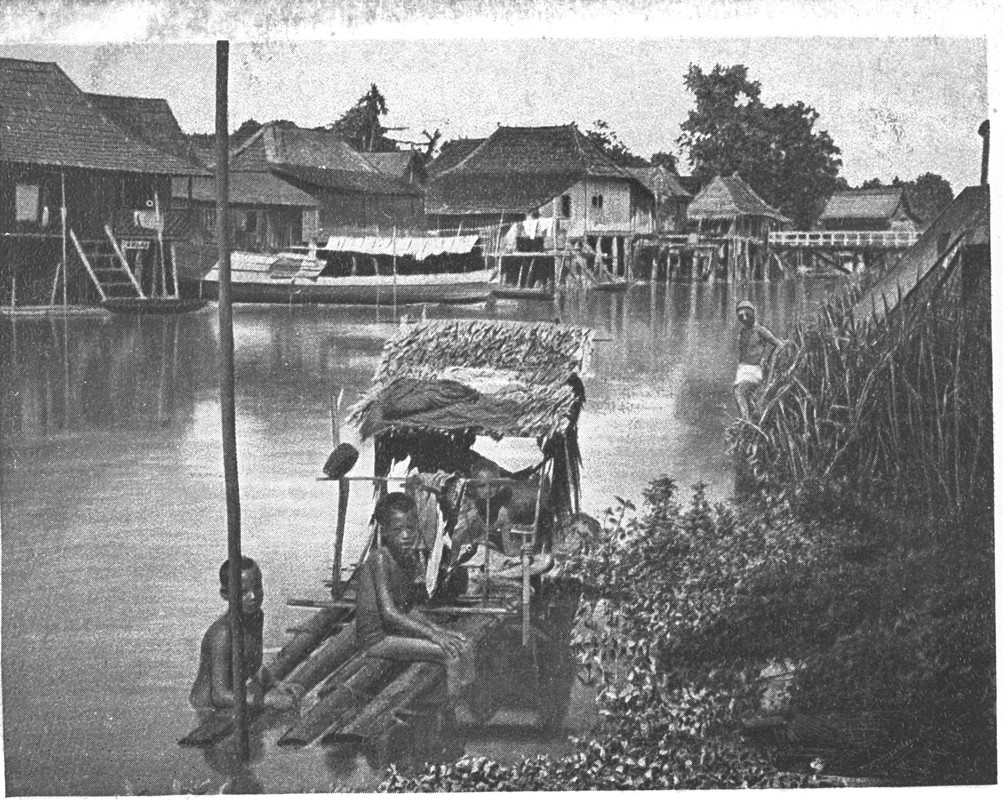Contributions to education by Hokkien community in Singapore
The overseas Chinese placed great value in education, and the leaders of the Hokkien community of Singapore were no exception. In 1829, 10 years after the founding of modern Singapore, missionary Claudius Henry Thomsen (1782–1835) documented three Chinese private schools on the island, one of which was located on Pekin Street and ran lessons in the Hokkien dialect for 22 students. Two works written during the Daoguang era — Treatise on Britain (1832) by Xiao Lingyu (1789–unknown) and The Illustrated Treatise on the Maritime Kingdoms (1847–1848) by Wei Yuan (1794–1857) — mentioned American Mission Press, a publishing arm and school of American mission in Singapore where Americans learnt Chinese from Hokkien and Cantonese tutors. There were also several private schools that taught in Hokkien and Cantonese.
The beginnings of Hokkien free schools
Nevertheless, Singapore was still lacking in formal Chinese educational institutions at the time. It was not until the mid-19th century, when Tan Kim Seng (1805–1864) founded Chong Wen Ge (1849–) and Chui Eng Free School (Chui Eng Si E, 1854–1954), that schools catering to various dialect groups started to become commonplace.
Tan, a Malaccan-born leader of the Hokkien community with ancestral roots in Yongchun, Fujian, established Chong Wen Ge in 1849, the 29th year of the Qing dynasty’s Daoguang era, and it is known as Singapore’s first Hokkien free school.1 He set an example by making a generous donation of 880 Straits dollars.2 Many local Hokkien merchants, such as Hong Juncheng, Huang Chongwen, Cheong Sam Teo (1805–1862), Chan Koo Chan, and Xu Simian,3 made substantial donations too, and a total of 7,504 Straits dollars was raised for the school in Telok Ayer Street.

Later, when Tan started Chui Eng Free School, he led by example once again and donated a piece of land worth 1,710 Straits dollars in nearby Amoy Street as the site of the new school. He was supported by 12 other wealthy Hokkien merchants who contributed a total of 6,345 Straits dollars in construction funds. On top of that, Tan raised an additional 3,848 Straits dollars from other Hokkien merchants and businesses to cover the school’s operating costs.
The new free school quickly became a prominent Chinese educational institution. J. D. Vaughan (1825–1891), a British expert on Chinese affairs, noted in the 1870s that Chui Eng Free School had 100 students attending classes every day, as well as two teachers. The school, which was managed by the Hokkien community, appointed officials to regularly inspect the performance of its students and teachers. The results of its annual examinations were published in local Chinese newspapers. The Qing dynasty’s Consul-General in the Straits Settlements was also invited to appraise the student’s examination results. In 1892, that official was none other than the renowned Qing poet Huang Tsun-hsien (1848–1905).
As demonstrated by Chong Wen Ge and Chui Eng Free School, the early Hokkien free schools in Singapore were able to maintain high academic standards due to the support and supervision of the Hokkien community. The involvement of the Chinese newspapers and Consul-Generals of the Qing dynasty also motivated students to excel academically.
Hokkien philanthropists
In 1899, Singapore Chinese Girls’ School — the first Chinese girls’ school on the island — opened its doors in Hill Street, near present-day City Hall. It was founded by doctor Lim Boon Keng (1869–1957), who donated land for the school; lawyer Song Ong Siang (1871–1941); and scholar Khoo Seok Wan (1874–1941). Lim’s wife, Margaret Wong (1874–1905), taught at the school.
Prominent businessman Tan Kah Kee (1874–1961) was another leader of the Hokkien community who devoted himself to educational causes. He founded Tao Nan School in 1906, Ai Tong School in 1912, Chong Fook Girls’ School (now Chongfu School) in 1915, and Nan Chiau Girls’ School (now Nan Chiau High School) in 1947. In 1919, he led the founding of The Chinese High School (now Hwa Chong Institution), the first Chinese secondary school in Singapore.

Besides contributions to Chinese education, Singapore’s Hokkien pioneers made significant contributions to English education on the island. Cheang Hong Lim (1825–1893), for example, founded Cheang Wan Seng School in 1875 to teach English to underprivileged children for free. Tan Kah Kee also supported English schools, donating 30,000 Straits dollars to Anglo-Chinese School and 10,000 Straits dollars to Raffles College.
The efforts of the Hokkien community in promoting education continued with the establishment of Nanyang University. Initiated by rubber magnate Tan Lark Sye (1897–1972) in 1955, the university was the highest Chinese-language institution in Southeast Asia at the time. It eventually merged with the University of Singapore in 1980 to become the National University of Singapore.
This is an edited and translated version of 新加坡闽帮教育事业. Click here to read original piece.
| 1 | According to inscriptions on stone tablets that had been installed in 1867 and 1887 to commemorate the school’s founding and restoration. |
| 2 | Straits dollars refer to the legal currency issued during the British colonial rule in the Straits Settlements. |
| 3 | Birth and death years of several Hokkien merchants are unknown. |
Chen, Ching-ho and Tan, Yeok Seong, eds. Xinjiapo huawen beiming jilu [A Collection of Chinese inscriptions in Singapore]. Hong Kong: The Chinese University of Hong Kong Press, 1972. | |
Dean, Kenneth and Hue, Guan Thye, eds. Chinese Epigraphy in Singapore 1819–1911. 2 Vols. Singapore & Guangxi: National University of Singapore Press and Guangxi Normal University Press, 2017. | |
Kua, Bak Lim, ed. Xinhua lishi renwu liezhuan [Biographies of Singapore Chinese Figures]. Singapore: EPB Publishers, 1995. | |
Poon, Sing Wah, ed. Xiaoshi de huaxiao: guojia yongyuan de zichan [Vanishing Chinese Schools: a perpetual national asset]. Singapore: Federation of Chinese School Alumni Associations, 2014. | |
Song, Ong Siang. One Hundred Years’ History of the Chinese in Singapore: The Annotated Edition, annotated by Kevin Y. L. Tan. Singapore: National Library Board and World Scientific, 2020. First published 1923 by John Murray (London). |










